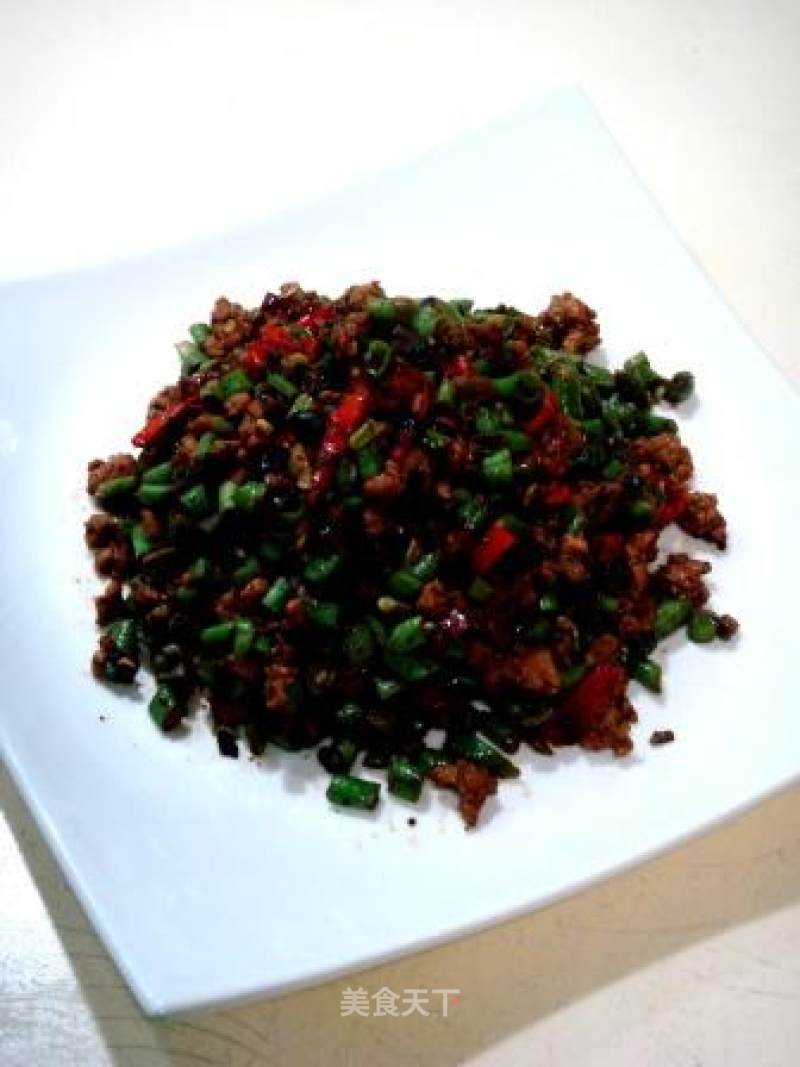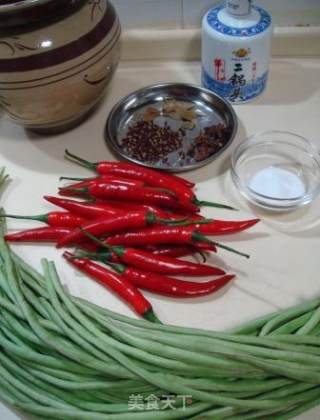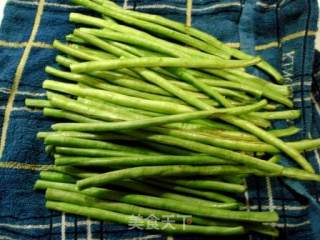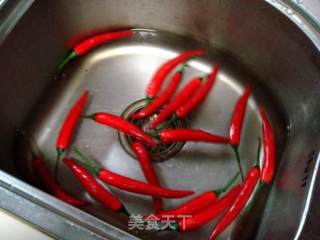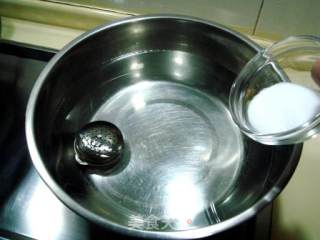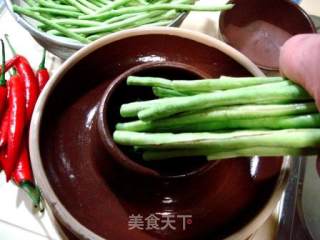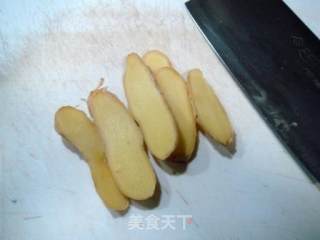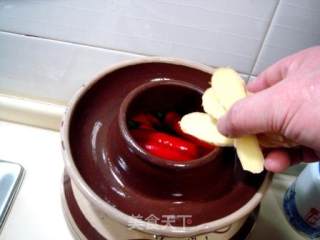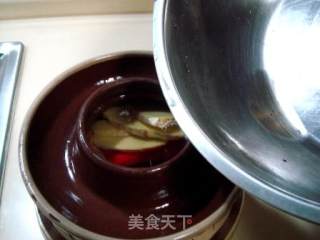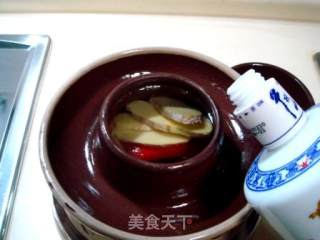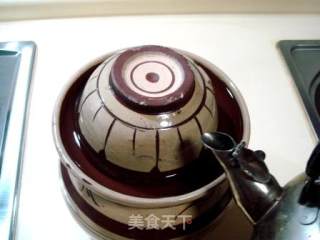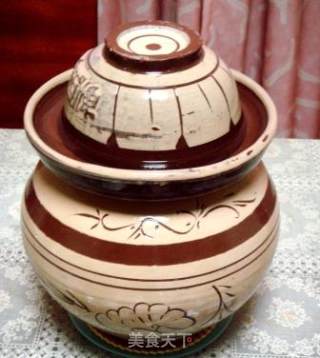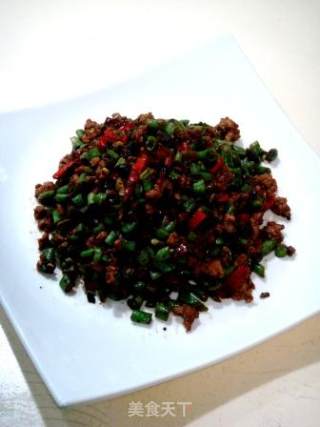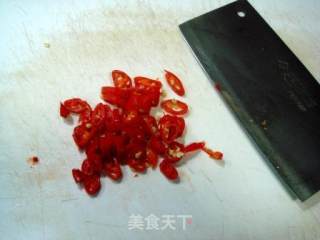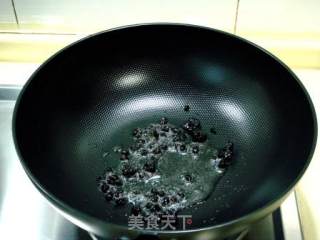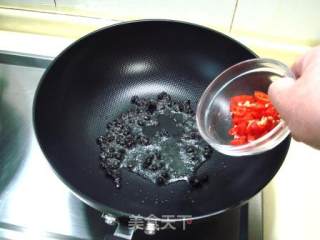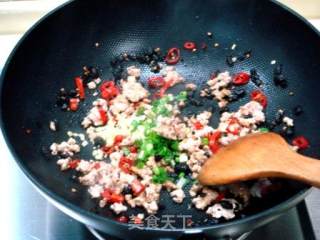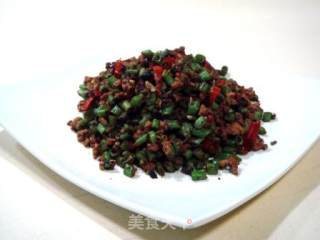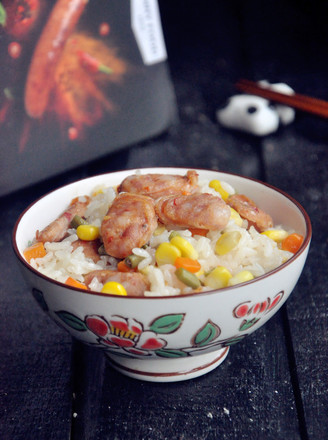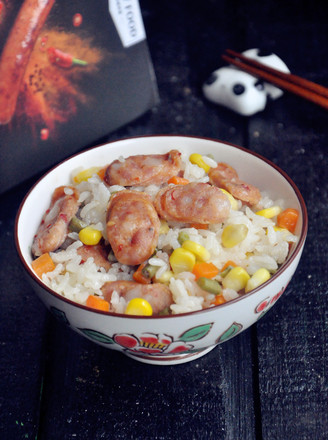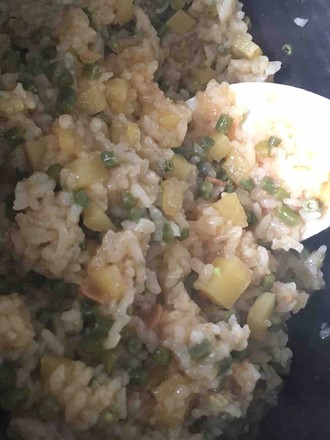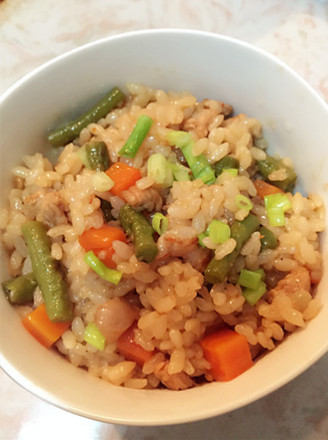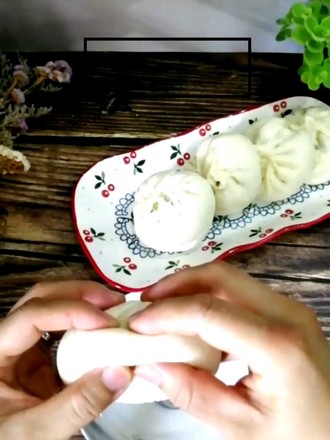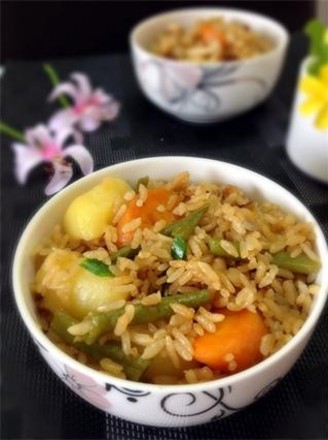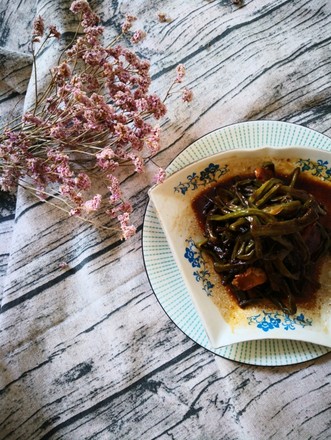Family Side Dishes, A Jar of Seasonings to Make "tamarind and Pickled Peppers"
by Large frying spoon
Favorite
Difficulty
Easy
Time
48h
Serving
2
The homemade "tamarind and pickled peppers" are more delicious and hygienic than those bought outside, and do not add preservatives and sorbic acid.
"Tamarind" can make many dishes, such as "fried tamarind with minced meat, tamarind fish with chopped pepper, tamarind with spicy tofu" and so on.
"Pickled peppers" can be made into chopped peppers and used to stir-fry fish-flavored dishes, as well as "chopped pepper fish head, chopped pepper fried beef, chopped pepper spicy fried cuttlefish" and so on. They are all very delicious.
Making "tamarind and pickled peppers" at home is very simple. The easiest way is just to soak in cold water, salt and white wine. It's a little more complicated, you can put some spices, etc., that will taste better. The key is to use qualified kimchi jars to make. Only use the kimchi jars to soak vegetables in order to ensure that they will not deteriorate. The old soup soaked in vegetables is also very delicious. You can use it to make "sour soup fish". It is absolutely appetizing and delicious. It will make you eat it forever, hehe!
Making "tamarind and pickled peppers" is the same method as making kimchi, and the most taboo thing about making kimchi is that there are bacteria in it. After entering the miscellaneous bacteria, it will deteriorate, and the deteriorated kimchi can no longer be eaten! The "Kimchi Jar" is a well-sealed container. The infused vegetables are sealed with water at the mouth of the jar. As long as there is no shortage of water in the groove of the seal, no bacteria can enter. During the fermentation of soaked vegetables, a large number of lactic acid bacteria that are beneficial to the human body will be produced. The lactic acid bacteria will produce carbon dioxide during the fermentation and expansion process. Due to the expansion pressure, the carbon dioxide with acid gas will be continuously discharged from the mouth of the jar. Because the groove of the mouth of the altar is sealed by water, the water is a flowing liquid, and the excess gas inside can be discharged out of the altar by the water, and the unclean air outside cannot enter the altar because there is no back pressure. Therefore, It can maintain the high purity of the strains in the jar, and all the beneficial substances such as lactic acid bacteria and vitamins will remain intact, which will make it taste pure and delicious, and will not be easily contaminated by bacteria.
It is recommended to use the water for soaking vegetables, be sure to use the boiled water after high temperature sterilization and let it cool, or use pure water or mineral water to keep the kimchi highly pure and hygienic. Put a proper amount of high-quality liquor inside to increase the aroma and prevent deterioration due to your negligence. The containers and utensils used must not be oily, and special chopsticks, spoons or clamps should be used for feeding. These small objects should be disinfected frequently to ensure that the kimchi is not contaminated by foreign bacteria.
The clean water used to seal the mouth of the jar is recommended to use cold water as well. Normal clean water will contain bacteria, which will quickly cause a layer of sticky substance to appear in the groove of the mouth of the jar. This is the water impurity. Caused. In addition, wipe the sealed sink every three to four days. Use a towel dipped in 1% 200 sodium hypochlorite water to wipe. When wiping, do not splash the water into the altar. Wring out the towel before wiping. After wiping, cover the lid and then Pour in fresh cold water to seal it.
The following introduces the simple method of making "sauerkraut and pickled peppers" at home. By the way, use the soaked "sauerkraut" to make a "fried tamarind with minced meat" that Chairman Mao liked most
"Tamarind" can make many dishes, such as "fried tamarind with minced meat, tamarind fish with chopped pepper, tamarind with spicy tofu" and so on.
"Pickled peppers" can be made into chopped peppers and used to stir-fry fish-flavored dishes, as well as "chopped pepper fish head, chopped pepper fried beef, chopped pepper spicy fried cuttlefish" and so on. They are all very delicious.
Making "tamarind and pickled peppers" at home is very simple. The easiest way is just to soak in cold water, salt and white wine. It's a little more complicated, you can put some spices, etc., that will taste better. The key is to use qualified kimchi jars to make. Only use the kimchi jars to soak vegetables in order to ensure that they will not deteriorate. The old soup soaked in vegetables is also very delicious. You can use it to make "sour soup fish". It is absolutely appetizing and delicious. It will make you eat it forever, hehe!
Making "tamarind and pickled peppers" is the same method as making kimchi, and the most taboo thing about making kimchi is that there are bacteria in it. After entering the miscellaneous bacteria, it will deteriorate, and the deteriorated kimchi can no longer be eaten! The "Kimchi Jar" is a well-sealed container. The infused vegetables are sealed with water at the mouth of the jar. As long as there is no shortage of water in the groove of the seal, no bacteria can enter. During the fermentation of soaked vegetables, a large number of lactic acid bacteria that are beneficial to the human body will be produced. The lactic acid bacteria will produce carbon dioxide during the fermentation and expansion process. Due to the expansion pressure, the carbon dioxide with acid gas will be continuously discharged from the mouth of the jar. Because the groove of the mouth of the altar is sealed by water, the water is a flowing liquid, and the excess gas inside can be discharged out of the altar by the water, and the unclean air outside cannot enter the altar because there is no back pressure. Therefore, It can maintain the high purity of the strains in the jar, and all the beneficial substances such as lactic acid bacteria and vitamins will remain intact, which will make it taste pure and delicious, and will not be easily contaminated by bacteria.
It is recommended to use the water for soaking vegetables, be sure to use the boiled water after high temperature sterilization and let it cool, or use pure water or mineral water to keep the kimchi highly pure and hygienic. Put a proper amount of high-quality liquor inside to increase the aroma and prevent deterioration due to your negligence. The containers and utensils used must not be oily, and special chopsticks, spoons or clamps should be used for feeding. These small objects should be disinfected frequently to ensure that the kimchi is not contaminated by foreign bacteria.
The clean water used to seal the mouth of the jar is recommended to use cold water as well. Normal clean water will contain bacteria, which will quickly cause a layer of sticky substance to appear in the groove of the mouth of the jar. This is the water impurity. Caused. In addition, wipe the sealed sink every three to four days. Use a towel dipped in 1% 200 sodium hypochlorite water to wipe. When wiping, do not splash the water into the altar. Wring out the towel before wiping. After wiping, cover the lid and then Pour in fresh cold water to seal it.
The following introduces the simple method of making "sauerkraut and pickled peppers" at home. By the way, use the soaked "sauerkraut" to make a "fried tamarind with minced meat" that Chairman Mao liked most

